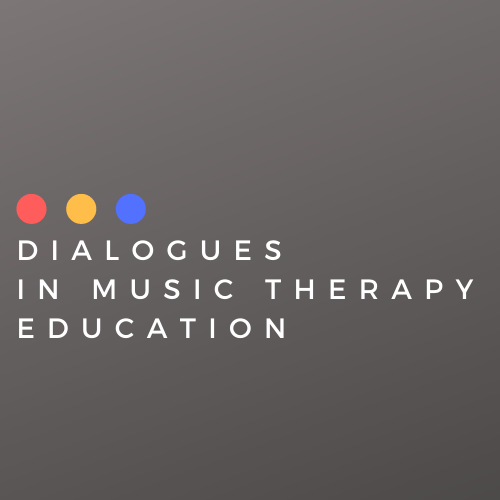Integrating Physiological Measures within a Music Therapy Research Course:
Program Description and Initial Evaluation
DOI:
https://doi.org/10.18060/27465الكلمات المفتاحية:
Music Therapy Education، Undergraduate Research، Course-Based Research، Course-Based Undergraduate Research Experience، EEG، HRV، Skin Conductanceالملخص
Applying research to practice is an essential competency, and some educators have turned to course-based undergraduate research experiences (CUREs) to support music therapy students in developing these skills. We provided a bounded CURE involving a research question requiring data from three different biosensors. We collected program evaluation outcomes where respondents reported increased interest and confidence in reading and doing research as well as personal investment in the project. Respondents also indicated that, as a result of taking this course, they were more likely to take part in research projects in the future and they were interested in pursuing master’s level research. The students also reported that using the sensors in the course supported their learning. We discuss the role of the research assistant, including her deepened understanding of research concepts through her work with the data collection and preparation stages. We plan to continue implementing CUREs with biosensors in future runs of the course, and with larger class sizes we aim to publish data from our projects, while also examining students’ experiences.
المراجع
American Music Therapy Association [AMTA]. (2013). Professional Competencies | American Music Therapy Association (AMTA). https://www.musictherapy.org/about/competencies/
American Music Therapy Association [AMTA]. (2015). Music therapy research 2025: Proceedings. https://www.musictherapy.org/assets/1/7/MTR2025proceedings.pdf
Borgeat, F. (1983). Psychophysiological effects of two different relaxation procedures: Progressive relaxation and subliminal relaxation. Psychiatric Journal of the University of Ottawa, 8(4), 181–185.
Davidson, R. J., Saron, C. D., Senulis, J. A., Ekman, P., & Friesen, W. V. (1990). Approach-withdrawal and cerebral asymmetry: Emotional expression and brain physiology I. Journal of Personality and Social Psychology. 58(2), 12.
Dvorak, A. L., & Hernandez-Ruiz, E. (2019). Outcomes of a course-based Undergraduate Research Experience (CURE) for Music Therapy and Music Education Students. Journal of Music Therapy, 56(1), 30–60. https://doi.org/10.1093/jmt/thy020
Fachner, J. (2014). Communicating change – meaningful moments, situated cognition and music therapy: A response to North (2014). Psychology of Music, 42(6), 791–799. https://doi.org/10.1177/0305735614547665
Fachner, J. C., Maidhof, C., Grocke, D., Nygaard Pedersen, I., Trondalen, G., Tucek, G., & Bonde, L. O. (2019). “Telling me not to worry…” Hyperscanning and neural dynamics of emotion processing during Guided Imagery and Music. Frontiers in Psychology, 10. https://www.frontiersin.org/articles/10.3389/fpsyg.2019.01561
Fachner, J., Gold, C., & Erkkilä, J. (2013). Music therapy modulates fronto-temporal activity in rest-EEG in depressed clients. Brain Topography, 26(2), 338–354. https://doi.org/10.1007/s10548-012-0254-x
Fuchs, D., Hillecke, T. K., & Warth, M. (2018). Relaxation effects of musically guided resonance breathing: A randomized controlled pilot study. Music and Medicine, 10(2). 104-112. https://doi.org/10.47513/mmd.v10i2.576
Hernandez-Ruiz, E., Dvorak, A. L., & Alderete, C. (2022). Virtual Course-Based Undergraduate Research Experience (CURE) during the COVID-19 Pandemic. Music Therapy Perspectives, 41(1), 63-74. https://doi.org/10.1093/mtp/miac012
Hernandez-Ruiz, E., James, B., Noll, J., & Chrysikou, E. G. (2020). What makes music relaxing? An investigation into musical elements. Psychology of Music, 48(3), 327–343. https://doi.org/10.1177/0305735618798027
Kang, K., Orlandi, S., Lorenzen, N., Chau, T., & Thaut, M. H. (2022). Does music induce interbrain synchronization between a non-speaking youth with cerebral palsy (CP), a parent, and a neurologic music therapist? A brief report. Developmental Neurorehabilitation, 25(6), 426–432. https://doi.org/10.1080/17518423.2022.2051628
Koelsch, S., & Jäncke, L. (2015). Music and the heart. European Heart Journal, 36(44), 3043–3049. https://doi.org/10.1093/eurheartj/ehv430
Laine, C. M., Spitler, K. M., Mosher, C. P., & Gothard, K. M. (2009). Behavioral triggers of skin conductance responses and their neural correlates in the primate amygdala. Journal of Neurophysiology, 101(4), 1749–1754. https://doi.org/10.1152/jn.91110.2008
Metzner, S., Jarczok, M. N., Böckelmann, I., Glomb, S., Delhey, M., Gündel, H., & Frommer, J. (2022). Improvement of pain experience and changes in heart rate variability through music-imaginative pain treatment. Frontiers in Pain Research, 3, 943360. https://doi.org/10.3389/fpain.2022.943360
Mojtabavi, H., Saghazadeh, A., Valenti, V. E., & Rezaei, N. (2020). Can music influence cardiac autonomic system? A systematic review and narrative synthesis to evaluate its impact on heart rate variability. Complementary Therapies in Clinical Practice, 39, 101162. https://doi.org/10.1016/j.ctcp.2020.101162
Taylor, D. B. (1973). Subject responses to precategorized stimulative and sedative music. Journal of Music Therapy, 10(2), 86–94. https://doi.org/10.1093/jmt/10.2.86
Tucek, G., Maidhof, C., Vogl, J., Heine, A., Zeppelzauer, M., Steinhoff, N., & Fachner, J. (2022). EEG hyperscanning and qualitative analysis of moments of interest in music therapy for stroke rehabilitation – A feasibility study. Brain Sciences, 12(5), 565. https://doi.org/10.3390/brainsci12050565
Waldon, E. G. (2015). Music therapists’ research activity and utilization barriers: A survey of the membership. Journal of Music Therapy, 52(1), 168–194. https://doi.org/10.1093/jmt/thv001
Waldon, E. G., & Wheeler, B. L. (2017). Perceived research relevance: A worldwide survey of music therapists. Nordic Journal of Music Therapy, 26(5), 395–410. https://doi.org/10.1080/08098131.2017.1284889
Weston, T. J., & Laursen, S. L. (2015). The Undergraduate Research Student Self-Assessment (URSSA): Validation for use in program evaluation. CBE—Life Sciences Education, 14(3), ar33. https://doi.org/10.1187/cbe.14-11-0206
التنزيلات
منشور
كيفية الاقتباس
إصدار
القسم
الرخصة
الحقوق الفكرية (c) 2024 Andrea Hunt, Felicity Sims

هذا العمل مرخص بموجب Creative Commons Attribution 4.0 International License.





